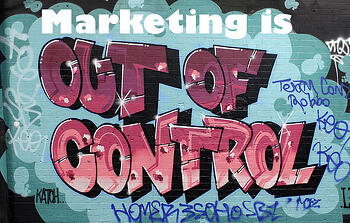
It's no a secret that certain aspects of the Internet are changing every day, and organizations are constantly redesigning their websites in order to remain relevant in the digital marketing. Before starting with your website redesign process we have a strategy with clear guidelines for good planning and execution for successful redesign. Careful planning and site infrastructure are key to ensuring positive outcomes.
1. Know your current website
Analyze the positioning of the current website. Check all parameters to determine which pages are the ones that generate the most traffic and conversion. This allows you to assess the current state of your website and identify where it is you need more help to achieve their goals. Some indicators that you can use are:
- Current traffic website
- Pages with higher traffic
- User time browsing the website
- Current State of SEO (Search Engine Optimization) and keywords that have positioning (this is crucial)
- Generated Sales through the website (this is another indicator that is directly measured by the changes)
If you do not have a way to track these parameters to your website, you can install Google Analytics on your site to determine these parameters.
2. Before the trip define your goals
I ask yourself, why do I need this website redesign Process? It is true that your site has been around for a while, however, without establishing a clear and concise manner why, how and when redesigning your website might be frustrated, wasting time and money Understanding the current state of your website ideas and how to measure the effectiveness now is the time to align with the goals you want to achieve. Serves not only make general goals like "I need more visits " Instead as yourself Why you need more visitors? What kind of visitors do I need? that we serve 10,000 visits from users who are not interested in our services or products.
It is crucial to determine the specific reasons why you are seeking to redesign your website and essentially those reasons must be aligned with the goals of your company. The contrary, it will end up with a website Visually Attractive but little business generator to the final is what we seek.
3. Take Inventory (site-map to keep ranking 301)
Create a map of your website and make an inventory of the email addresses (URLs) of the pages that are currently generating more traffic. If nobody can find your site, your leads and sales can not increase. Therefore, be sure to create 301 redirects appropriate, develop a good strategy redirection and do research keywords that are generating the most of your current traffic. This will help to keep going and not lose its current positioning in search engines like Google, Yahoo, and Bing.
4. Content Value (Present solutions to your prospects)
There is a saying in the world of Internet marketing that says "the more content you have, the more traffic you will receive" High volume QUALITY content ensures that your business is going in the right direction. Build a strategy that adds content over time as blogging daily or weekly is a great resource. Stay away from generic content publishing and try to concentrate on solving common problems to your prospects. This content will help you find a specific name of the problem or need that potential customer and in turn making the company a leader in the industry! This is what we call Win/Win.
5. SEO Optimization
Realize that a study of keywords you want to achieve in your new website and include those that have worked for you so far. It is important to know what does SEO mean and then each page includes a keyword and word included in this:
- Title of page
- Meta Description
- The content (it is important to appear naturally in the content. Ancient Strategies as mention the word many times in the content are not recommended)
- Name of the image file and include the Alt description of Images
6. Responsive Design
In such an interconnected world we live in is vital that our website is prepared to meet the needs of our visitors. This is the feature that allows a website idea to interpret what type of electronic device the user is using to access our content on the Internet (desktop, tablet, or smart phone) and in turn will send the user to the appropriate view for the device in use. Achieving faster response and more easily adapt the content to the user. The interesting fact is that the design of functional response continues to grow and develop. So what was created a year ago can be very different from a site designed today. Whatever the case, this tool provide a user the best viewing is just good business, especially with clients connecting on the go.
7. Try, Try, Try
The testing phase should not only occur when the project is to launch. Divide the project at different stages of testing. This will allow you to be more effective and identify problems before the final step of saving a lot of headaches and frustrations. Make sure to test the operation, navigation, interpretation and administration of your new website before the official release date. Ask members of your audience to try the site and ask them to provide their honest opinion before officially completing the project.
The website redesign process is something that has to be taken very seriously and it is a job that requires commitment and effort. Identifying goals and have a plan to follow are the keys to the correct execution of your website ingredient.
To find out more about what changes are going to matter going forward with website redesign, read our free eBook 10 Step Checklist For Your Next Website Redesign and find out how some of the best approaches available today can make a difference in your company web presence online.
photo credit: DeptfordJon via photopin cc


Comments
Currently, there are no comments. Be the first to post one!